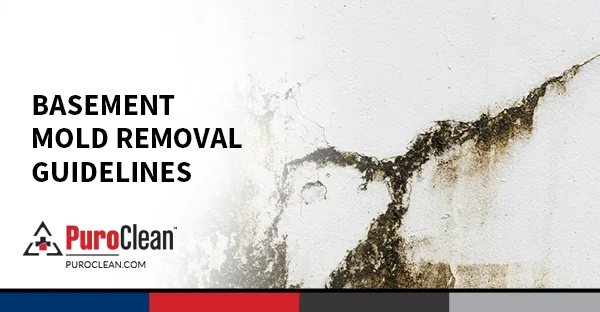Bleach and other biocides are commonly used by homeowners for cleaning, but their effectiveness and necessity in mold removal are often questioned. At PuroClean of East Orlando, we understand the importance of addressing mold properly and safely. Let’s explore whether bleach or other biocides, such as disinfectants, sanitizers, or fungicides, should be used to kill mold, and discuss the proper approach to mold removal.
Understanding Mold Growth and the Role of Biocides
Mold is a type of fungus that thrives in moist environments. It can grow on various surfaces, including wood, drywall, carpets, and tiles, particularly in areas with high humidity or water damage. While mold removal can be challenging, using chemicals such as bleach is not always the best solution.
In most cases, the goal should be to remove the mold growth physically—either by cleaning the affected surfaces or removing moldy materials. The use of bleach or other chemicals to kill mold growth is unnecessary in many situations. While biocides may kill the mold on contact, they do not address the underlying issue of moisture that enables mold to grow in the first place.
Why Bleach May Not Be the Best Option
1. Bleach and Its Limitations: Bleach is often used for mold removal because it is a powerful disinfectant that can kill many types of bacteria, viruses, and fungi, including mold. However, bleach has limitations when it comes to mold removal:
- Surface-Only Effectiveness: Bleach only works on non-porous surfaces, such as tiles, glass, and countertops. It does not penetrate porous materials like wood, drywall, or carpet where mold may thrive below the surface. This means that bleach may kill the visible mold on the surface but won’t fully address the mold embedded in porous materials, allowing it to regrow over time.
- Potential Health Risks: Even after bleach kills the mold, dead mold spores can still pose a health risk. These dead spores can be inhaled, potentially causing respiratory issues, allergies, or aggravating asthma. So, just killing the mold isn’t enough to mitigate health risks.
2. Inadequate for Larger Infestations: In cases of extensive mold growth, bleach alone will not solve the problem. Large mold infestations require more than surface-level cleaning. The mold must be physically removed, and the root cause—usually excess moisture—must be addressed to prevent further growth. Mold remediation professionals, like those at PuroClean of East Orlando, use advanced techniques and equipment to handle larger infestations and ensure that the issue does not return.
When Should You Use Disinfectants or Fungicides?
While bleach is not typically necessary for mold removal, there are certain situations where a disinfectant or fungicide may be used. If you are dealing with a sensitive individual, such as someone with a weakened immune system or a respiratory condition, using a disinfectant or fungicide to sanitize the area after mold removal may be beneficial. This step ensures that any remaining mold spores or bacteria are neutralized, reducing the risk of health issues.
Important Considerations:
- Read Labels Carefully: If you choose to use bleach or another chemical, it’s essential to follow the manufacturer’s instructions. The label will provide safety guidelines, including proper dilution, application methods, and necessary precautions.
- Avoid Mixing Chemicals: Never mix bleach with ammonia or acidic cleaners, as this can produce dangerous chlorine gas. Always ensure that any cleaning products are used in a well-ventilated area and that protective gear such as gloves, goggles, and masks are worn.
The Right Approach to Mold Removal
At PuroClean of East Orlando, we believe the most effective mold remediation begins with addressing the moisture problem that caused the mold in the first place. Once the underlying issue is identified and resolved, our professionals will use advanced equipment and cleaning methods to remove mold from your property thoroughly. For small mold growth, we may use specific cleaning agents that are more appropriate than bleach, such as mold-specific cleaners or enzymatic cleaners, which can safely break down mold without causing harm to the surface or the environment.
After the mold has been removed, we recommend ensuring that the affected areas are properly dried and ventilated. Using dehumidifiers and ensuring good airflow can help prevent future mold growth. In some cases, it may also be necessary to replace materials like drywall or carpet that have been heavily damaged by mold.
Conclusion
While bleach and other biocides may be tempting to use when you discover mold in your home or business, they are not always the best solution. Mold removal is more effective when focused on physically removing the mold and addressing the moisture source. If you are dealing with mold, it’s best to consult a professional like PuroClean of East Orlando for proper remediation services. Our experienced team can handle mold removal safely and effectively, ensuring the health and safety of your property and everyone inside it.
If you have mold concerns or need professional mold remediation services, don’t hesitate to reach out to PuroClean of East Orlando. We are here to help you “Go Beyond Clean” and restore your property to a safe, healthy condition.
Contact us today to schedule a mold inspection and discuss your mold removal options!



